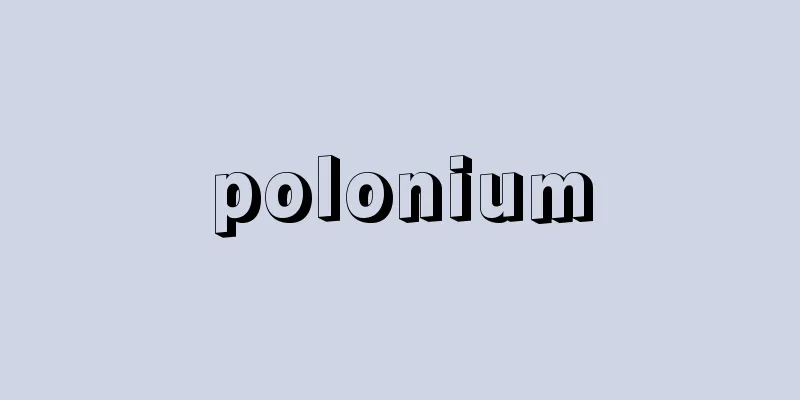polonium

|
Po. An element with atomic number 84. It is a chalcogen element in group 16 of the periodic table with the electron configuration [Xe]4f 14 5d 10 6s 2 6p 4. There is no atomic weight because it has no stable isotopes and does not naturally exhibit a specific isotopic composition. It was discovered in uraninite in 1898 by M. Curie as the first radioactive nuclide (mass number 210). The element was named after Curie's country of birth, Poland. Source: Morikita Publishing "Chemical Dictionary (2nd Edition)" Information about the Chemical Dictionary 2nd Edition |
|
Po.原子番号84の元素.電子配置[Xe]4f 145d106s26p4の周期表16族カルコゲン元素.安定同位体がなく,天然で特定の同位体組成を示さないので原子量はない.1898年にM. Curie(キュリー)により,せんウラン鉱中に最初の放射性核種(質量数210)として発見された.元素名はCurieの生国ポーランドにちなんで命名された. 出典 森北出版「化学辞典(第2版)」化学辞典 第2版について 情報 |
<<: Bologna - Bologna (English spelling)
>>: Boronia (English spelling)
Recommend
van Beneden (English spelling)
...A parasitic microorganism whose body is made u...
Benue River
…The Niger River originates in the distant mounta...
Myra fugax (English spelling) Myrafugax
...They are known from Tokyo Bay to the west coas...
Food - Eat
〘Ta-ba-1〙 Ta/Bu 〘Ta-ba-2〙 (A humble form of the yo...
Hydroxide - Water soluble hydroxide
It refers to compounds that contain OH as a compo...
Military administration
Military administration. It is responsible for the...
Kendo - Kendou
Today's kendo is based on swordsmanship, whic...
"Why did God become man?" - Why did God become man?
…After he moved to Canterbury, he wrote many pole...
Meitzen, Friedrich Ernest August
Born December 16, 1822 in Breslau (now Wrocław, Po...
Cooperative Republic of Guyana
…Official name: Co-operative Republic of GuyanaAr...
Amazing Stories
The world's first science fiction magazine was...
"Kusha Bakuron"
…He was born in Kashmir, North India, around the ...
Jidda
…The correct Arabic name is Judda. It is also cal...
Soul - Reikon (English spelling) soul English
The principle assumed to give life to humans and ...
Sundman, KF
...This result suggested that even if a new integ...









